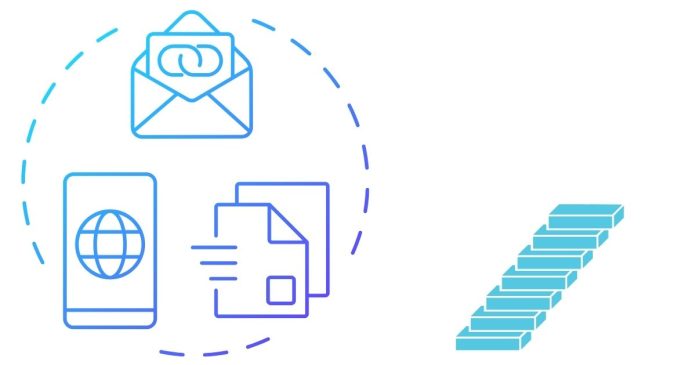The Physical Layer is the first layer of the OSI (Open Systems Interconnection) model. Its main responsibility is the transmission and reception of raw data bits over a physical medium like cables, radio waves, or optical fibers. This layer deals with the actual hardware mechanisms that transmit data, without concern for the meaning or structure of the data being transmitted.
Key Functions of the Physical Layer:
- Bit Transmission:
- The Physical Layer takes the data in the form of bits (0s and 1s) and transmits it over a physical medium.
- It converts digital data into signals (electrical, optical, or radio waves) and vice versa, allowing communication between devices.
- Physical Medium and Interfaces:
- It defines the hardware means of sending and receiving data. This includes cables (e.g., twisted-pair cables, coaxial cables, fiber optics), wireless radio frequencies, and connectors.
- The interfaces for connecting network devices like routers, switches, or hubs are part of the Physical Layer.
- Data Encoding:
- The Physical Layer defines how bits are encoded into signals. This encoding method might include variations like NRZ (Non-Return to Zero), Manchester Encoding, or Differential Manchester Encoding, which determine how 1s and 0s are represented by electrical or optical signals.
- Data Rate Control:
- It specifies the rate at which data is transmitted over the physical medium, also known as the baud rate or bit rate. It defines how many bits per second (bps) can be sent over the medium.
- Signal Modulation:
- Modulation is the process of varying the signal to encode data. The Physical Layer may use modulation techniques like Amplitude Modulation (AM), Frequency Modulation (FM), and Phase Modulation (PM) to encode data into analog signals for transmission.
- Transmission Mode:
- The Physical Layer defines the direction of data flow, which can be:
- Simplex: Data flows in one direction only (e.g., keyboard to computer).
- Half-duplex: Data flows in both directions, but not at the same time (e.g., walkie-talkie).
- Full-duplex: Data flows in both directions simultaneously (e.g., telephone call).
- The Physical Layer defines the direction of data flow, which can be:
- Error Detection (Low Level):
- While the Physical Layer doesn’t provide error correction or data reliability, it can include mechanisms to detect physical transmission errors (like signal degradation) and inform higher layers about issues in signal integrity. However, error correction and retransmission are handled by higher layers like the Data Link Layer.
- Topology Support:
- The Physical Layer may support different types of network topologies. Common topologies include star (where all devices are connected to a central device like a hub or switch) and bus (where devices are connected to a common cable).
Examples of Technologies in the Physical Layer:
- Copper Cables (Ethernet cables, coaxial cables)
- Fiber Optic Cables
- Wireless Signals (Wi-Fi, Bluetooth, radio waves)
- Infrared (used in remote controls and short-range communication)
- Transmission Media: Electrical signals in copper cables, light pulses in fiber optics, and radio signals in wireless communication.
- Network Interface Cards (NICs): Hardware devices that allow computers to connect to the network via physical medium.
Physical Layer Devices:
- Hubs: A hub is a simple physical layer device that forwards bits to all connected devices. It does not make decisions based on MAC addresses.
- Cables: Cables (like Ethernet cables) physically connect devices and transmit signals in the form of electrical or optical impulses.
- Repeaters: Devices that amplify signals to extend the distance over which data can travel.
Key Characteristics of the Physical Layer:
- Unidirectional or Bidirectional: The direction of data transmission, either one-way or both ways.
- Data Encoding and Signaling: How bits are turned into signals for transmission over a medium.
- Transmission Rate: How fast the data can be transmitted (bit rate or baud rate).
- Signal Strength and Quality: Issues such as attenuation, interference, and noise are dealt with at this layer.
Physical Layer Standards:
The Physical Layer standards define the technical details of how devices communicate at the hardware level. Some well-known standards include:
- Ethernet (IEEE 802.3): Defines the specifications for wired Ethernet.
- Wi-Fi (IEEE 802.11): Defines standards for wireless networking.
- DSL (Digital Subscriber Line): Defines the use of telephone lines for high-speed internet connections.
- Fiber Optics (e.g., IEEE 802.3ae): Defines the use of fiber optic cables for high-speed data transmission.
Key Differences Between the Physical Layer and Other Layers:
- Physical Layer vs Data Link Layer: The Physical Layer is responsible for the actual transmission of raw bits, while the Data Link Layer (Layer 2) is concerned with organizing those bits into frames, ensuring error-free data transfer, and handling MAC addressing.
- Physical Layer vs Network Layer: The Network Layer (Layer 3) deals with routing and logical addressing, while the Physical Layer focuses on the physical transmission of data over the network.
The Physical Layer is a crucial aspect of networking, as it is responsible for moving raw bits from one device to another over a physical medium. It defines the hardware and the signals used to transmit data but does not concern itself with data meaning or structure. This layer ensures that data can travel across network mediums like wires, radio waves, and optical fibers, forming the foundation for communication in all networks.


